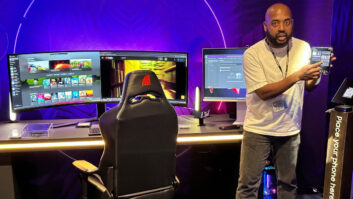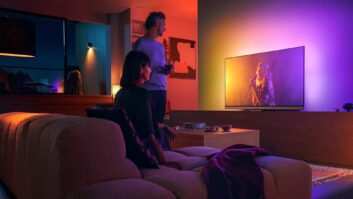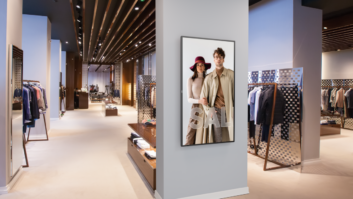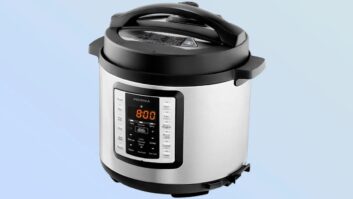Less than a year into his role as Philips Consumer Electronics North America president, Stewart Muller said he expects the company to continue driving its increased brand share growth in flat-panel TV and other categories using the right balance of innovation, performance, value and distribution.
“The single most important thing we are going to do amid all of the chaos in pricing in the TV business and the consumer electronics business in general is to be the most reliable and predictable partner we can,” Muller told TWICE. “We want to be the best supplier in the industry. We feel that’s the No. 1 thing that we can add to the innovation and quality we deliver as the Philips brand.”
He said that means Philips won’t be following a few competitors in dropping MAP guidelines to hit key price points for Black Friday or any other event.
“We’re not going to pull the rug out from under our retailers and remove our projected retail pricing policies,” said Muller. “They have made a big commitment to us in inventory and advertising and we think we owe that to them.”
As for its dual-brand strategy, Philips, continues to use Magnavox as high-volume brand, with lines a step above the opening price points, while Philips will continue as “a mid-tier to high-end brand,” Muller observed.
Muller also vowed not to tamper with Philips’ established distribution direction, which in recent years reduced the number of direct dealer accounts from over 300 to 50.
“What we have to do, however, is find out how to do more business in more categories with those same 50 accounts,” Muller said, adding that the company may experiment with mixing truckloads of products in order to deliver more of the SKUs dealers have requested.
Philips, he said, is looking to add new categories where it has “a chance to be the market leader with 30 percent of business or more, not just a market leader with 5 percent.”
He cited the recently launched DECT voice over IP (VoIP) phones for the Microsoft and Skype VoIP services as an example.
New products being showcased at International CES will play into the same themes, with iPod docking a key Philips feature in audio systems for 2007, Muller said.
“Being a former Apple employee and knowing the company as well as I do, I don’t think we can take 20 percent share of the MP3 player market,” Muller said. “However, we will be making a big play in well-styled iPod docking products and home audio components. You will see stellar designs for compact products with 5.1 full surround including our One Bar full-surround sound speaker system housed in a single bar that fits underneath your flat-panel TV.”
Accessories will also be a big area of emphasis for the company in 2007.
“We want to be the major player in the $7 billion accessories business in North America,” Muller said. “We acquired Gemini a few years ago and renamed it Philips Peripherals and Accessories, and we just acquired Power Sentry, the leading player in the power surge business.”
He said the company will “continue to look for sensible acquisitions in the accessories,” although, he said, the RCA accessories business that Audiovox bought wasn’t a good fit. (See story on p. 8.)
“The whole thing about accessories is that the retailers don’t want an item here or item there, they want you to take over a whole wall that they can give us to manage that category for them,” Muller said, adding that Philips has RetailLink software resources to work with Wal-Mart and CPFR for “a number of other accounts.”
In product development, Philips Consumer Electronics CEO Rudy Provoost has made cosmetic design “a key differentiator” for the company, Muller said, adding that Philips’ product assortment for North America will incorporate stronger European design elements this year.
“In television, especially, design is more important than ever because high-definition tends to level the picture quality playing field,” Muller observed.
In Connected Display products, Philips remains very committed to Ambilight as a signature technology around the world, he said.
“Ambilight has been a tremendous success in the European market,” Muller said. “Our biggest challenge in the North American market has been displaying it effectively at retail.”
He said the retail trend of big aisles and brightly lit floors is a deterrent to showing the immersive Ambilight viewing experience in a store.
Philips has been working with dealers to place Ambilight models in the home theater showrooms where conditions are more controlled, while at the same time competing in picture quality on the regular display line with a range of matching non-Ambilight products.
“So in 2007, for every Ambilight product we will have a non-Ambilight product with the same sleek look and state-of-the-art picture quality shipping in both Ambilight and non-Ambilight,” he said, with Ambilight products in the home theater display area, and non-Ambilight products in the general flat-panel TV mix.
“Being able to show both, I think, will help our Ambilight sales and our non-Ambilight sales,” he said.












